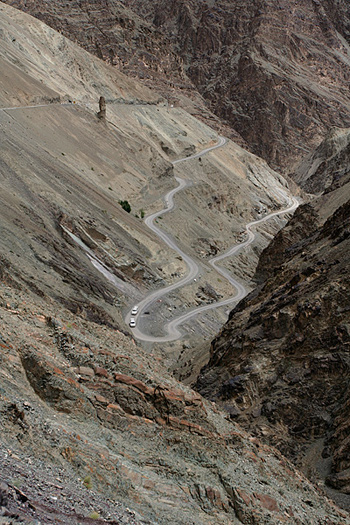Ladakh – The Long Standing Dream
“Although I had thought myself hard to impress after traveling for decades across the Himalayas, I heard a gasp escape my jaded lips, and realized I was glimpsing a location even more unlikely than that of the Potala Palace in Lhasa, and a temple even older than that wonder of the world. ” – Pico Iyer on Lamayuru, Ladakh.
Going to Ladakh was a long standing dream. Friends would come back from their two-weeks in Ladakh, some on a biking trip and some taking it more leisurely, but everyone returning with loads of praises on the mountain region. The photographs spoke of the landscapes even when people did not say much. Every time I read someone’s stories or saw some pictures of Ladakh as I gallivanted in the cyberspace, the longing would re-appear and linger on. I wished to see the rare landscapes where one can drive for hundreds of kilometers without seeing any habitation. I would sit for hours making plans for the coming summer, letting Ladakh take over my mind.

The roads of Ladakh
Ladakh had no parallels. In there was a lake that stretched more than 100km across two countries at an altitude of more 14,000 feet. It had mountain ranges standing higher than 18,000 feet, where one can simply drive through. There was more than 400 kilometers of arid landscape where not a single soul lived. Surviving there was an ancient Buddhist civilization that was like a little Tibet. It was the shangrila of travellers and an enigma for everyone. Everything I heard about it added to my yearnings.
I made the first serious attempt to travel into Ladakh two years ago. Hauling myself to Manali, the gateway to Ladakh, I could barely wait for the next two days I would be there to make plans and arrange logistics on the long journey to Leh. But Mangal Singh, my contact in Manali and the man whom we trusted to take us through these Trans-Himalayan landscapes had other plans for us. After listening carefully to our plans, knowing about the time we could spare (less than 10 days) and understanding our interests, he laid out a plan that we could not say no to. He suggested that we go to Spiti Valley, which we accepted after listening to his argument. Lahaul and Spiti was an overwhelming experience, but it prolonged my wait to get to Ladakh.
The next year, I came back with plenty of time in hand. I had quit my day-job and was armed with unlimited time. I was going to take it easy, giving Ladakh as much time it needs to explore fully from one end to other. I was back again in Manali. This time the journey would go step by step, stopping anywhere we wished to on the way and taking time just to get across the mountains to Leh.
I did manage to spend the planned two months wandering the mountains of Ladakh, seeing every corner of the region by every possible means. We took a marathon jeep ride lasting more than 12 hours sitting shoulder to shoulder with ten more people. We traveled in buses whose drivers were trained to take the steep and curvy roads with great ease. We took a taxi when nothing else was an option, and rode on bike over the high passes and across the streams. The journey took me through thousand year old monasteries, gigantic brackish lakes, ancient civilizations that persisted through the changing times, high passes and arid landscapes.
The long journey however, started with a long wait at the grimy bus station in Manali, reminiscent of the Indian plains.
To be continued.